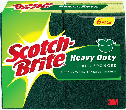Unfortunately most people won't notice if you keep your cement in peak condition, but the moment a stain appears, it seems to detract from the appearance of your whole home. Often natural elements are the causes of these unsightly stains. Wood and leaves contain natural dyes that, given enough time, are able to seep into their surroundings. Cement is porous and able to absorb these dyes and retain them for indeterminate amounts of time.
Understanding this, you can make proactive moves to prevent natural staining from trees and leaves from ever occurring. Avoid piling leaves on cement for an extended period of time. You especially do not want the leaves to get wet while they are on the cement, this will speed the dying process. Because water is able to condense more heavily at night avoid leaving leaves or wood on your cement overnight.
Also, if you live in a seasonal area where it snows, make an effort to clear your concrete of any leaves or wood. If these natural items are allowed to be snowed over and left until spring, they will certainly leave their mark on your cement.
In cases where you notice a stain has begun to form, act quickly to remove it. Older stains will be harder to remove.
To go about removing a stain, first gauge the severity of the stain (how dark it is, how long it has been on the cement). This will determine the type of treatment you should use.
The mildest solution is to wash the stain with water and dishwashing detergent. Wet the area, scrub in the detergent with a hard brush (not metal), let it stand for a few minutes, then rinse. You can use a scrubbing brush or pressurized water from a hose nozzle for rinsing. Powder dishwasher detergent can add enough appropriate abrasion to remove the stain.
For a moderate treatment replace the dishwashing detergent with bleach. Using the proper dilution instructions for the bleach, mix the bleach and water, scrub it on the stain, allow it to sit a few minutes, and then rinse it. Take care to protect any plants or natural life that you don't want to get bleach on.
For a deep treatment of the stain obtain tri-sodium phosphate (TSP) from a local house ware store. TPS can commonly be found in the painting section of these stores. Wear protective goggles, gloves and clothes. Mix a cup of TSP with a gallon of hot water. Scrub the mixture onto the pre-wetted stain and allow it to sit for 10 to 20 minutes. Rinse the cement and the surrounding area thoroughly with water.
Also, considering the nature of the stain, you can employ an organic stain remover. These stain removers are designed to specifically attack carbon-based material, like the wood and leaf dyes that cause cement staining. Organic stain removers take longer to process and break down the stain and usually need to sit 24 to 48 hours before showing results. Follow the specific directions on your selected brand.
In all cases if your cement has a unique color you may want to test your chosen cleaning method on an inconspicuous spot, just to check for possible discoloration.

Tough Tools for Tough Cleaning Jobs O-Cel-O sponges and Scotch Brite scrubbers are truly a fashion-meets-function success story. The highly absorbent and durable sponges in this handy six-pack make quick work of tough cleaning problems in any kitchen, bathroom, or garage. Check out Scotch-Brite Heavy Duty Scrub Sponges today!
If you have a seriously stained driveway, there is one surefire method that you can use to ensure you get it clean. The ...
Discover MoreOil stains in concrete are difficult to remove since they have to be absorbed out. Start by laying down kitty litter or ...
Discover MoreWhen removing rust stain from your driveway you want to start with the mild cleaners and if they do not work move on to ...
Discover MoreFREE SERVICE: Get tips like this every week in Cleaning Tips from Tips.Net. Enter your address and click "Subscribe."
FREE SERVICE: Get tips like this every week in Cleaning Tips from Tips.Net. Enter your address and click "Subscribe."
Copyright © 2024 Sharon Parq Associates, Inc.
Comments